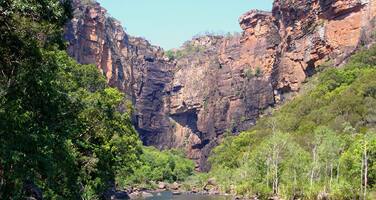Kakadu National Park
Factors affecting the property in 1994*
- Management systems/ management plan
- Mining
Factors* affecting the property identified in previous reports
- Mining projects;
- Protected area considered inadequate at the time of inscription
International Assistance: requests for the property until 1994
Total amount approved : 0 USD
Missions to the property until 1994**
Information presented to the Bureau of the World Heritage Committee in 1994
Kakadu National Park, Australia (N/C 147)
At the request of the Australian Nature Conservation Agency, an ICOMOS mission paid a three-day visit to Kakadu National Park in April 1994. The mission had discussions with the Traditional Owner (Aboriginal) representatives on the managing council and visited a number of the rock-art sites within the property. It also the opportunity to observe the mosaic burning land-management practices of the Park management, which follow the pattern in use by the Traditional Owners over at least 25,000 years.
The mission was impressed by the high level of management skills within the Park and their extensive use of traditional practices. It also felt that the entire area represents a cultural landscape of great importance, since it preserves intact a form of land management that has survived nowhere else in the world outside Australia.
Summary of the interventions
Decisions adopted by the Committee in 1994
Exports
* :
The threats indicated are listed in alphabetical order; their order does not constitute a classification according to the importance of their impact on the property.
Furthermore, they are presented irrespective of the type of threat faced by the property, i.e. with specific and proven imminent danger (“ascertained danger”) or with threats which could have deleterious effects on the property’s Outstanding Universal Value (“potential danger”).
** : All mission reports are not always available electronically.


